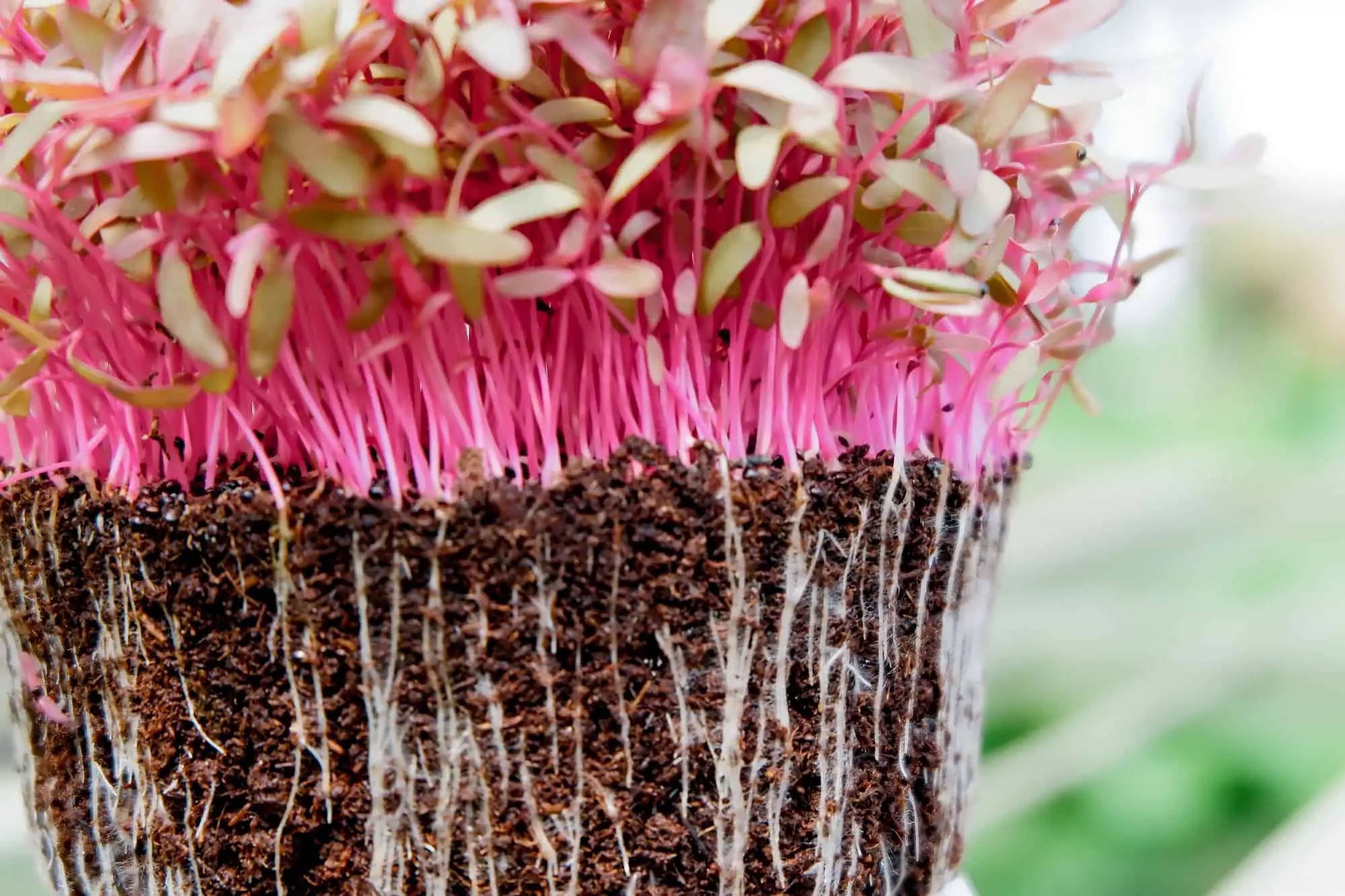If you grow your own microgreens, you have probably wondered (at some point) whether your microgreens will regrow after cutting. I know I have pondered this myself as I do want to get as much food as I can out of each harvest. So do microgreens regrow after cutting?
Some microgreens, such as pea shoots, will regrow after cutting. However, growing a new tray of microgreens takes less time than trying to regrow microgreens. In addition, regrown microgreens tend to have stunted growth. This results in a harvest comprised of microgreens that are less tender and do not have as much flavor.
The rest of this article will provide a detailed description of the science behind regrowing microgreens. I will also give you my thoughts on whether regrowing microgreens is even worth it.
Factors That Impact Microgreen Regrowth
Although growing microgreens is relatively easy compared to other food crops, regrowing microgreens after the first harvest is a bit more difficult. The sections below detail the factors that affect the success of regrowing microgreens.
The Type of Microgreen Matters
Some types of microgreens regrow better than others. For example, microgreens belonging to the Fabaceae family and the Lamiaceae family are more likely to regrow successfully. Some examples of microgreens belonging to the Fabaceae family include pea and chickpeas. Some examples of microgreens belonging to the Lamiaceae family include basil, sage, and oregano.
Where You Cut The Microgreens Matters
Cutting the microgreens near the soil surface or growing mat significantly minimizes the chance of microgreens regrowing. This is because only certain portions of the plants can grow new plant tissue. Like other living organisms, plants grow through a combination of cell growth and cell division. As plant cells grow, they differentiate meaning that the cell becomes a specialized cell. Once a plant differentiates, it can no longer divide into new cells.
A key component of continued plant growth is the meristem. Meristem can be defined as a type of plant tissue that consists of undifferentiated cells that can continue to divide and differentiate. Apical meristems are found at the tip of roots and buds. Stems continue to grow because the meristem adds plant tissue behind it. If the top part of the stem is severed, the plant cannot continue to generate new stem tissue.
In order to ensure that the microgreens regrow, allow the lowest leaves to remain on the stem. This is because the bottom leaves are often situated in a location for cell regeneration. In addition, allowing some of the leaves remain enables to the plant to continue performing photosynthesis in order for the plant to continue growing.
Pests and Diseases That Affect Microgreen Growth
Another factor in the success of regrowing microgreens is the plant’s vulnerability to pests and diseases. Microgreens that have been cut are even more likely to become infected with fungal diseases than microgreens growing from seed.
To minimize the chance of fungal diseases attacking your cut microgreens, it is important to make sure their growing environment is as clean as possible. This means that you should use sterile scissors to cut the microgreens and use clean equipment for growing. Large-scale commercial growers will even use more advanced equipment such as ozone generators and ultraviolet (UV) filtration to maintain a sterile environment.
In addition to using sterile equipment, make sure you water your microgreens from underneath after the seeds have germinated. This will minimize the chance of mold problems.
Is Regrowing Microgreens Worth It?
Regrowing microgreens can be a fun experiment, but it is not a good method for increasing harvest yield. The reasons for this are as follows:
- Regrowing microgreens takes longer than growing another tray. This seems a bit counter-intuitive. Because the plant has already started growing, it seems like the plant would grow back quickly. However, this is not the case. It can take up to a week to start seeing any new growth at all. From a profit/yield standpoint, it is much better to use the space and energy to grow a fresh batch of microgreens.
- The second harvest of microgreens will not taste as good as the first harvest. Regrown microgreens tend to be more fibrous and less flavorful than the first harvest of microgreens.
- Regrown microgreens do not contain as many nutrients.
- There is an extremely small chance that all of the stems will regrow. This means that the second harvest of microgreens will be much smaller than the first.
- The cut stems are susceptible to mold and other fungal diseases after harvest.
What To Do With Microgreens After Harvesting
If regrowing microgreens is impractical in many cases, what should you do with leftover microgreen trays? After all, simply throwing away the organic matter is a waste. There are actually a few things you can do with microgreen trays after harvesting.
In many cases, your “leftover” microgreen trays contain seeds that did not germinate initially as well as little seedlings that were not cut during harvest. Some growers may be able to add the contents of their growing tray to their garden in order to give these seeds and seedlings a chance to fully develop.
In addition, you can often add the leftovers from your microgreen tray to your compost pile. You can also compost growing mats made of hemp or coco coir. Composting is a great way to generate a nutrient-rich growing medium for future microgreen growing projects (as long as it is sterilized first).

